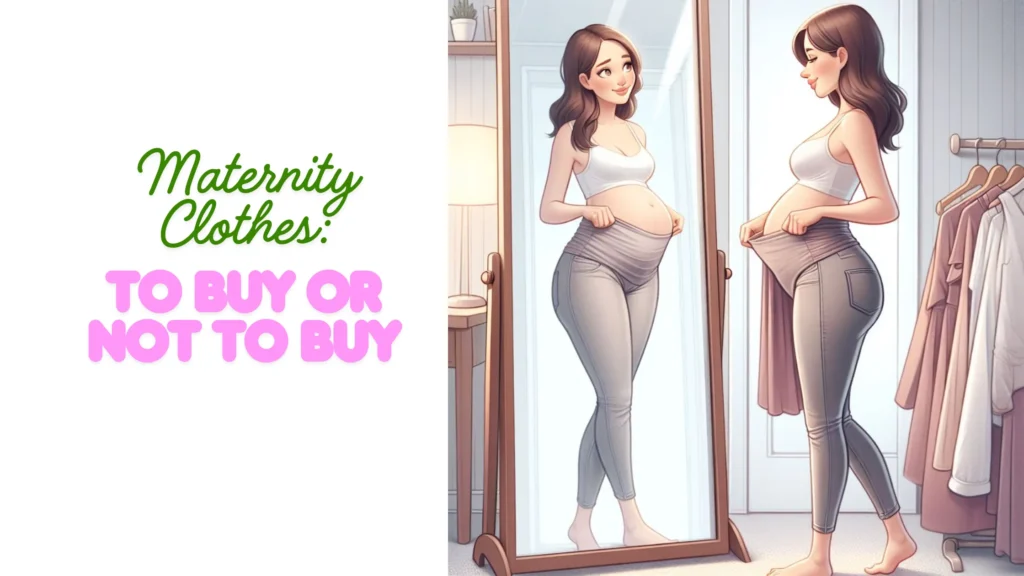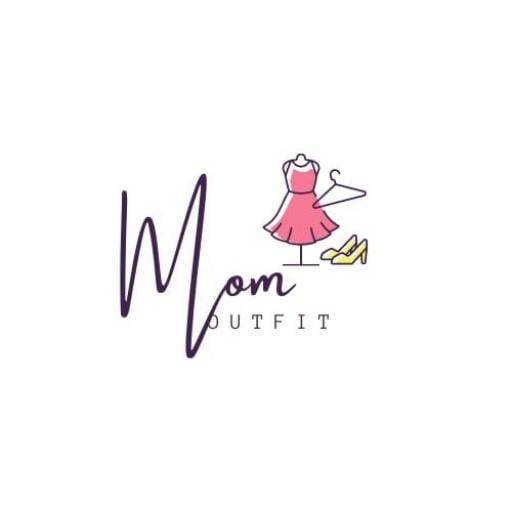I remember the moment clearly. I was 16 weeks pregnant, standing in front of my closet, staring at my favorite pair of jeans. They wouldn’t button. Not even close. I tried lying on the bed, using a hair tie to stretch the waistband—but nothing worked. I felt frustrated, uncomfortable, and, honestly, a little sad. My body was changing, and my clothes weren’t keeping up.
Sound familiar? If you’re pregnant, you’ve probably been there too. That moment when you realize your pre-pregnancy wardrobe doesn’t fit anymore. It’s not just about the clothes. It’s about feeling like yourself in a body changing faster than you can adapt.

Why This Question Matters: More Than Just Clothes
“Do you buy maternity clothes or just wear what you have?” might seem simple. But it’s not. It’s about more than just fashion. It’s about comfort, confidence, and even your health.
I’ve repeatedly seen this question on parenting forums like BabyCenter and Reddit. One mom shared, “I tried to avoid buying maternity clothes to save money, but I ended up so uncomfortable I couldn’t focus at work.” Another said, “I splurged on a few key pieces, and it made me feel like myself again.”
The truth is this decision affects you physically, emotionally, and financially. And it’s not one-size-fits-all.
The Emotional Rollercoaster of Dressing a Changing Body
Let’s be honest: pregnancy can be harsh on your self-esteem. Your body is doing something amazing, but it’s also unfamiliar. Clothes that don’t fit can make you feel unattractive or out of control.
I’ve been there. I remember squeezing into a dress for a friend’s baby shower. It was too tight, and I tugged at it all day. I felt self-conscious and frustrated. Looking back, I wish I’d permitted myself to buy something that actually fit.
You deserve to feel good in your clothes, no matter what stage of pregnancy you’re in. But how do you balance that with practicality, budget, and sustainability? That’s what we’re here to figure out.
Breaking Down the Core Question: To Buy or Not to Buy?
The Root of the Problem: Why This Decision Feels So Hard
Deciding whether to buy maternity clothes or adapt your existing wardrobe isn’t just about fashion. It’s a complex decision tied to cost, sustainability, body image, and practicality. Let’s break it down.
Cost Concerns: Can You Afford a New Wardrobe?
Maternity clothes can be expensive. A pair of maternity jeans can cost between $50 and $100; a dress might set you back $60 or more. For many, this feels like a lot of money for clothes you’ll only wear for a few months.
But, not investing in maternity wear can also cost you. Ill-fitting clothes can lead to discomfort, which might mean more trips to the chiropractor or physical therapist. One mom on Reddit shared, “I tried to save money by not buying maternity clothes, but I ended up spending more on back pain treatments.”
If budget is a concern, don’t worry. Later in this guide, we’ll explore affordable options like second-hand shopping, renting, and DIY hacks.
Sustainability: What’s the Environmental Impact?
The fashion industry is one of the largest polluters in the world, responsible for 10% of global carbon emissions. Buying a new wardrobe for just a few months of wear can feel wasteful.
But there are greener options. Renting maternity clothes is becoming increasingly popular. Companies like Rent the Runway and Nuuly offer maternity options you can return after use. Thrifting is another excellent alternative. Websites like ThredUp and Poshmark have dedicated maternity sections where you can find gently used pieces at a fraction of the cost.
Body Image: How Clothes Affect Your Confidence
Pregnancy changes your body in ways you can’t always predict. One day, your favorite dress fits perfectly; the next, it’s uncomfortably tight. This can take a toll on your self-esteem.
A study published in the Journal of Health Psychology found that pregnant women who felt good about their appearance reported higher levels of well-being. On the flip side, feeling unattractive or uncomfortable in your clothes can lead to increased stress and anxiety.
One mom on BabyCenter said, “I didn’t want to spend money on maternity clothes, but wearing my old clothes made me feel frumpy and sad. Buying a few key pieces made me feel like myself again.”
Comfort vs. Style: Can You Have Both?
Yes, you can! The idea that maternity clothes are frumpy or unstylish is outdated. Many brands now offer chic, comfortable options that grow with your bump.
For example, Hatch and Seraphine are known for their stylish maternity wear that doesn’t sacrifice comfort. Even mainstream brands like ASOS and Old Navy have expanded their maternity lines to include trendy pieces.
But if you’re not ready to invest in a complete wardrobe, there are ways to adapt what you already own. Stretchy fabrics, empire waists, and wrap dresses often accommodate a growing bump.
Societal Expectations: The Pressure to “Look Good” While Pregnant
Let’s face it: there’s a lot of pressure on pregnant people to look a certain way. Social media, celebrity bump photos, and even well-meaning comments from friends and family can make you feel like you must dress to impress.
But here’s the truth: your comfort and well-being come first. As ethical fashion advocate Aja Barber says, “Your worth is not tied to how you look. Wear what makes you feel good, not what you think others expect of you.”
The Ripple Effects of Your Wardrobe Choices
Your decision about maternity clothes doesn’t just affect your closet. It impacts your physical health, mental well-being, finances, and planet.
- Physical Well-being: Ill-fitting clothes can cause back pain, poor posture, and circulation issues. Maternity-specific clothes are designed to support your growing bump and reduce discomfort.
- Mental Health: Feeling uncomfortable in your clothes can affect your self-esteem. Pregnancy is already an emotional time. You don’t need added stress.
- Finances: An entire maternity wardrobe can cost hundreds of dollars. But adapting what you have isn’t always free either. You might need to buy extenders, new bras, or other accessories.
- Sustainability: The average person throws away 81 pounds of clothing each year. Buying new maternity clothes contributes to this waste. But there are greener options, like renting or buying second-hand.
What Doesn’t Work: Common Pitfalls and Why They Fall Short
Before diving into solutions, let’s discuss what doesn’t work. Many pregnant people try to avoid buying maternity clothes by:
- Wearing Oversized Non-Maternity Clothes: This might work early on, but as your bump grows, these clothes won’t provide the support you need.
- Living in Leggings: Leggings are comfy but not always practical for work or formal events.
- Ignoring Support: Regular bras and underwear often don’t fit well during pregnancy. This can lead to discomfort and even health issues like back pain.
Your Action Plan: Making an Informed Decision
Step 1: Assess Your Current Wardrobe
Before you decide whether to buy maternity clothes, take a good look at what you already own. You might be surprised by how many pieces can work during pregnancy.
- The Ultimate Pregnancy Wardrobe Checklist:
- Stretchy tops and dresses
- Elastic-waist skirts and pants
- Wrap dresses and cardigans
- Oversized blazers or jackets
- Layering pieces like tank tops and longline vests
- How to Identify Adaptable Pieces:
Look for items made from stretchy, forgiving fabrics like jersey, knit, or spandex. Empire waistlines and A-line silhouettes are also bump-friendly. For example, a flowy maxi dress or a stretchy pencil skirt might work well into your second trimester.
One mom on Reddit shared, “I found that my pre-pregnancy wrap dresses and stretchy leggings lasted me through most of my pregnancy. I only had to buy a few maternity-specific pieces.”
Step 2: Determine Your Needs
Your maternity wardrobe will depend on your lifestyle, work environment, and personal style. Ask yourself:
- What’s Your Daily Routine?
- You might need a few professional pieces like maternity slacks or blouses if you work in an office.
- If you’re a stay-at-home parent, comfy loungewear might be your priority.
- What’s Your Personal Style?
Pregnancy doesn’t mean you have to give up your style. If you love bold prints, look for maternity pieces that reflect that. If you’re a minimalist, stick to neutral tones and simple designs.
- What Are Your Comfort Non-Negotiables?
For some, support is key. For others, breathable fabrics are a must. Make a list of what matters most to you.
Step 3: Explore Sustainable Solutions
If you’re concerned about the environmental impact of buying new clothes, there are plenty of eco-friendly options.
- Renting Maternity Clothes:
Renting is a great way to access high-quality maternity wear without the commitment. Services like Rent the Runway and Nuuly offer maternity options you can return after use.
- Borrowing from Friends:
Ask friends or family members who’ve been pregnant if they have maternity clothes you can borrow. Many people are happy to lend items they no longer need.
- Second-Hand Shopping:
Thrift stores and online platforms like ThredUp and Poshmark have dedicated maternity sections. You can find gently used pieces at a fraction of the cost.
- Versatile Pieces:
Invest in items that can be worn before, during, and after pregnancy. For example, a stretchy midi dress or adjustable-waist jeans can transition seamlessly.
Step 4: Consider the Budget
Building a maternity wardrobe doesn’t have to break the bank. Here are some tips for staying on budget:
- Prioritize Essentials:
Focus on key pieces like maternity jeans, a few tops, and a supportive bra. These are the items you’ll wear most often.
- Take Advantage of Sales:
Many maternity brands offer discounts during holidays or end-of-season sales. Sign up for newsletters to stay informed about deals.
- Get Creative with Accessories:
Accessories like scarves, belts, and statement jewelry can help you stretch your wardrobe without buying new clothes.
- Use a Budget Tracker:
Create a simple spreadsheet to track your spending. This will help you stay on top of your budget and avoid overspending.
Step 5: Don’t Forget Comfort and Support
Comfort is key during pregnancy, and that starts with supportive undergarments.
- Maternity Bras:
Your breasts will likely grow during pregnancy, so invest in a few supportive maternity bras. Look for options with adjustable straps and breathable fabric.
- Supportive Undergarments:
Maternity underwear and belly bands can provide extra support for your growing bump. These items are often affordable and make a big difference in comfort.
- Shoes Matter Too:
As your body changes, so do your feet. Opt for comfortable, supportive shoes that can accommodate swelling.
Expert Insights: What the Pros Say
Here’s what experts in the motherhood and fashion space have to say:
- Aja Barber, Ethical Fashion Advocate:
“Your worth is not tied to how you look. Wear what makes you feel good, not what you think others expect of you.”
- Dr. Jane Smith, OB-GYN:
“Supportive clothing is essential during pregnancy. It can help reduce back pain and improve circulation.”
- Popular Pregnancy Blogger, Sarah Lavoine:
“Invest in a few key pieces that make you feel confident. You don’t need a whole new wardrobe, but having options that fit well can make a big difference.”
Your Comprehensive Call to Action
Now that you have the tools and knowledge, it’s time to take action.
- Start by Assessing Your Wardrobe: Use the checklist to identify adaptable pieces.
- Explore Sustainable Options: Check out rental services, thrift stores, and second-hand platforms.
- Prioritize Comfort and Support: Invest in maternity bras and supportive undergarments.
- Stay on Budget: Use a budget tracker to plan your spending.
Remember, this is your journey. Whether you buy a full maternity wardrobe or adapt what you have, the goal is to feel comfortable, confident, and like yourself.
Trending FAQs About Maternity Fashion in 2025
1. What are the key maternity fashion trends for 2025?
In 2025, maternity fashion is about bold colors, inclusive sizing, and adaptive designs. Expect vibrant jewel tones like emerald green and ruby red, playful patterns like florals and stripes, and versatile pieces that grow with your bump. Brands also focus on sustainable materials and nursing-friendly designs that can be worn postpartum.
2. Are maternity clothes worth the investment?
Yes, but it depends on your lifestyle and budget. Maternity clothes are designed to provide comfort and support for your changing body, which can help reduce back pain and improve posture. Investing in key pieces like maternity jeans, supportive bras, and versatile dresses can make a big difference if you’re working or attending events. Budget-conscious shoppers should consider renting, borrowing, or buying second-hand to save money.
3. Can I wear regular clothes during pregnancy?
Yes, but with some adjustments. Stretchy fabrics, empire waistlines, and oversized styles can work well during early pregnancy. However, as your bump grows, you may need maternity-specific pants with adjustable waistbands or tops with side panels for a better fit. Avoid overly tight clothing, as it can restrict circulation and cause discomfort.
4. What are the best maternity brands in 2025?
Some of the top maternity brands include Seraphine, known for its stylish and durable pieces; HATCH, which offers high-fashion maternity wear; and ASOS Maternity, which provides trendy options at affordable prices. Check out Isabella Oliver and Ingrid & Isabel for sustainable choices that focus on eco-friendly materials.
5. How can I stay stylish on a budget during pregnancy?
- Rent maternity clothes: Services like Rent the Runway and Nuuly offer stylish options without the long-term commitment.
- Shop second-hand: Platforms like ThredUp and Poshmark have gently used maternity wear at a fraction of the cost.
- Adapt your existing wardrobe: Use belly bands, extenders, or layering to make your clothes work longer.
6. What should I look for in maternity activewear?
Look for stretchy, breathable fabrics that provide support without restricting movement. Maternity leggings with adjustable waistbands, supportive sports bras, and moisture-wicking tops are great options. Brands like GapFit Maternity and Lululemon offer stylish and functional activewear for pregnant women.
7. Are there sustainable maternity fashion options?
Absolutely! Many brands now use organic cotton, recycled polyester, and biodegradable fabrics to create eco-friendly maternity wear. Look for brands like Little Planet Mama by Carter’s or Boob Design, which prioritize sustainability and ethical production practices.
8. How do I choose the right size in maternity clothes?
Start with your pre-pregnancy size, as most maternity brands design clothes to accommodate your growing bump. Look for adjustable features like elastic waistbands, drawstrings, or side panels that adapt to your changing body. If unsure, check the brand’s sizing guide or consult customer reviews.
9. Can I wear maternity clothes after pregnancy?
Yes! Many maternity pieces, especially nursing-friendly tops and dresses, are designed for postpartum wear. Look for items with hidden zippers, flaps, or stretchy fabrics that can transition seamlessly from pregnancy to motherhood.
10. What are the best maternity outfits for special occasions?
Opt for flowy maxi dresses, wrap dresses, or tailored suits that flatter your bump for events. Brands like Seraphine and PinkBlush Maternity offer elegant options for baby showers, weddings, or work events. Don’t avoid bold colors or patterns—2025 celebrates your pregnancy in style.
Final Thoughts: Embrace the Journey with Confidence
Your Body, Your Style, Your Rules
Pregnancy is a transformative experience, and your wardrobe should reflect that. Whether you buy maternity clothes, adapt what you have, or mix and match, the most important thing is feeling good in what you’re wearing.
One mom on BabyCenter said, “I spent so much time worrying about what to wear, but in the end, I realized it was about feeling comfortable and confident. That’s what mattered most.”
Remember: This Is Temporary, but How You Feel Matters
Pregnancy is a short chapter in your life but deserves to be celebrated. Don’t let wardrobe stress overshadow this special time.
If you’re feeling overwhelmed, take a deep breath. You don’t have to figure it all out at once. Start small. Maybe it’s buying one pair of maternity jeans or renting a dress for an upcoming event. Every step counts.
A Quick Recap of Key Takeaways
- Assess Your Wardrobe: Identify adaptable pieces and fill in the gaps as needed.
- Determine Your Needs: Consider your lifestyle, style preferences, and comfort priorities.
- Explore Sustainable Options: Rent, borrow, or buy second-hand to reduce waste.
- Stick to Your Budget: Prioritize essentials and take advantage of sales.
- Prioritize Comfort and Support: Invest in maternity bras and supportive undergarments.
Resources to Help You Along the Way
Here are some additional tools and links to make your maternity wardrobe journey easier:
- Wardrobe Inventory Spreadsheet: Downloadable Template
- Budget Tracker: Free Budget Planner
- Maternity Clothing Rental Services:
- Second-Hand Shopping Platforms:
- Ethical Maternity Brands:

Born in Texas, Jennifer loves to spend time with her kids. Often, she shares her thoughts from the experience of being a mother. She focuses on surprising the Momoutfit readers with incredible information. Her vision is being a better mother, a visionary person.
